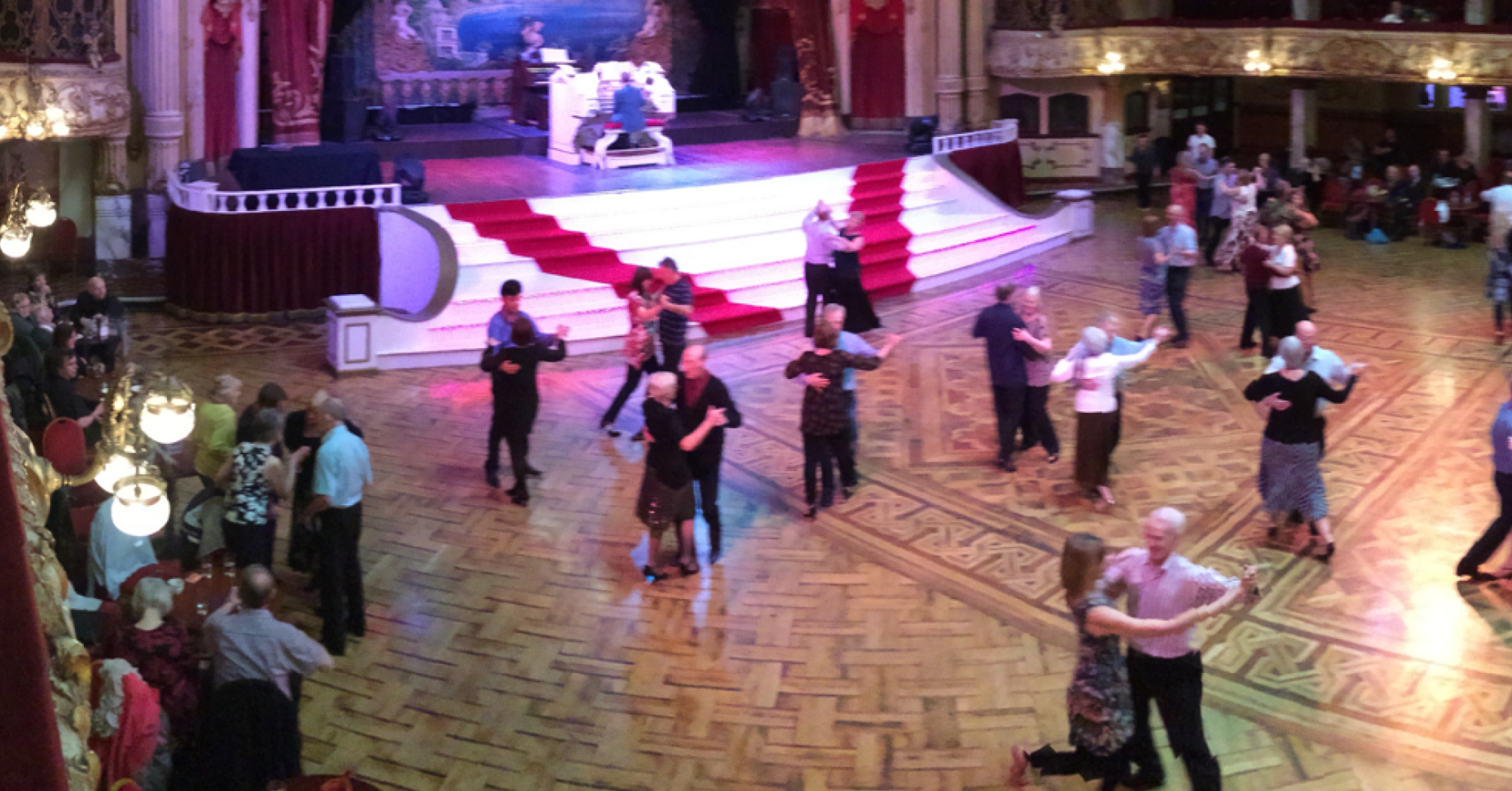3 foot positions:
- Whole foot (or Flat foot): feet lined up with knees (do not turn out foot, turn out is from hip socket). rooted into ground, solid, no wobble.
- Ball of the Foot (or demi-pointe position, arch) – common mistake is missing this step and go directly to pointe position. Foot is placed so that from toe to ball of foot is pressing into floor, with the arch flexed. also rooted into ground. need this position to be very defined, try to arch and extend as much as possible working toward 90 degree.
- Toe (Pointe): Feet are causing spine to move more. Foot is placed so that only tips of toes are pressing into floor, with the foot straight, feeling of the heel being drawn into the leg. It can be placed to the side, front, back or underneath body (high toe right next to standing foot)
** In Latin dances, Inside Edge of Foot is often used. Outside Edge of foot is not usually used.
Foot Turn Out:
- Foot is naturally turned out on backward and side steps.
- On forward step, tracking of moving foot is straighter. As weight is taken on to the front foot, the back foot will turn out naturally, gradually. Back foot does not turn out before weight is on front of the front foot. (This helps stability.)
- Back foot starts with slightly turned out position (does not start from maximum turn out position), and then gradually roll (which pushes body/spine forward as well, think about turning thigh outward) and it ends in max turned out position..
- Turn out is also on forward step when it’s checked and followed by weight change to back foot.
- Amount of turn out: 1/16 to 1/8, depending on physique.
Foot finishing position: Free foot/leg should always finish with high foot position
- When stepping to side, pay attention to the stepping foot position, use inside edge.
- In 2nd position, the free leg to the side, thigh should be turned out, making foot turned out
- When collecting to feet together, collect with inside edge of big toe into high toe position (or heel together)
- When stepping back, finish front free foot pointed with straight leg.
- When stepping forward, finish back foot turn out maximum with high hip.
Foot Movement:
- Keep energy from feet at all times. For basic movements, feet should not leave ground. Feet should maintain the energy you feel when you stand on balls of the feet. Pressure on the ground is what creates the grounded, solid look (as opposed to light). Feet should not be “loose” without tone.
- When feet are in side by side position, the pressure is not to push out, the feeling is squeezing to inside thigh of both legs.
- Hold the foot on floor as long as possible, then move foot quickly without missing stepping on beat. (Except for Jive). This may initially look robotic, but is a very necessary foundation. Later, add in body movement.
- Faster foot gives it more time for body actions. Chest and foot arrives and then body/hip.
- Footwork: mostly ball flat in Latin dances, a little more pressure on inside edge of ball of foot.
- Part of foot is in contact with floor at all times. Practice by placing a piece of paper under each foot. For every move, the feet should be taking the paper with it.
- Trailing foot: very important for the trailing foot to be turned out, also need to “wing the ankle” – there is downward pressure from inside of ball of foot. Create nice leg line.
- When stepping forward or to side, the heel of the other foot is released with IE of ball of foot in contact with floor.
- Track feet under body.
- Moving foot from one position to another, the leg must track under the body.
- All forward/backward open turns: start with step passing under body and then ending to front or back.
- “Working from floor on and up” – it’s the feet causing the spine to move (when doing demi-pointe and pointe, it will cause spine to move). Common mistake: gravity causing spine to move.
Terms used:
- Transfer weight: foot has remained with pressure on the floor at the end of preceding step. (i.e. moving partial weight)
- Replace weight: pressure is released from floor at the end of preceding step. (i.e. moving full weight)
